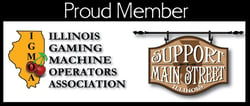Updating your menu doesn’t have to mean a full overhaul of all your dishes (although if you’re feeling ambitious and looking to re-brand, that is always an option). Many restaurateurs prefer to take it slow and remove one low-selling dish in favor of trying something new. Implementing these types of changes to your menu can allow you to provide cost-effective alternatives, allow you to try something new, and keeps customers coming back time and time again.
Here’s some more information for you to help you in the process of implementing changes to your menu.
The Changing Landscape of Food and Labor Costs
When food prices go up, most restaurants adjust for that by raising prices. These changes can affect your establishment’s menu balance of profitable and popular menu items. These items help your location keep in line with customer demand and making things profitable for you, but the restaurant industry is changing.
In addition to fluctuating food costs, more and more restaurants are opening. Unfortunately, the labor pool is not keeping pace to fulfill higher demands. With so many different forces at play, there is a give and take when it comes to pricings of food and labor. Being mindful of changing costs in these areas is crucial and necessary to when it comes time to change your menu.
How Often Should You Update a Restaurant Menu
There is no one-size fits all rule for every restaurant when implementing changes. Some like to update once a year, others could update every quarter. TouchBistro recommends seasonal changes as your best bet. This allows you to assess food prices as things become out of season. You could also choose to add seasonal dishes, such as hearty soups in the winter or salads in the summer. It is important to not implement changes too often; this can hurt your profits or damage your chances of customers returning.
Design Tips
When it comes to designing menus, every item placement matters. The location of each food item on the menu can impacts its potential sale. Design Shack explains how placement and spacing can affect how well a dish performs. Keeping consistent typography, colors and tone plays a huge impact on how patrons interact with your menu. Typography is the driver for every menu, so it should be the first thing you decide on. When making this choice, it is critical to keep in mind that your menu should align with your location’s brand, logo, and color scheme.
How to Make Changes Easier
Making menu changes to your location can be a great challenge, but also a lot of fun. Updating and changing your menu doesn’t have to happen all at once. One great way to test items is to run a special menu for a limited time. If after a certain amount of time the item doesn’t take off, you can remove it.
Another option to make changes easier is to use printable menus. Creating a full laminated menu can be time consuming and expensive. When it comes time to make changes, crossing off items or hand changing prices is just going to hurt your business in the end.
Your location’s menu can become very personal, but don’t be afraid of updates. The restaurant industry is changing, and your menu is a great place to start.




_121_Full%20Color_ON%20BLACK-01.png?width=267&name=AE_MultiLogo(H)_121_Full%20Color_ON%20BLACK-01.png)
